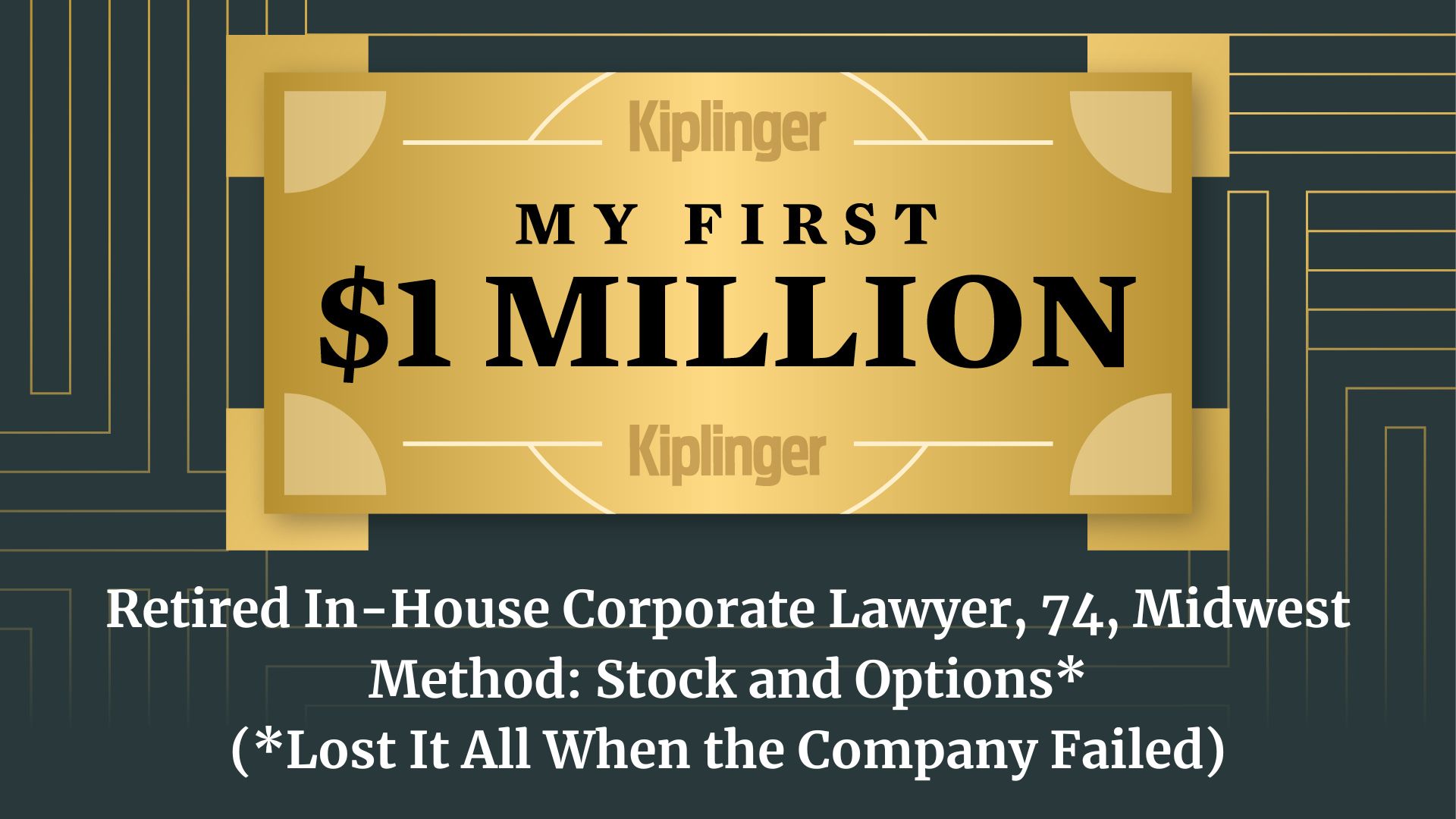Five Ways to Lower Your Risk in Retirement
If you're losing sleep at night worrying about your investments, you might want to consider the benefits of protecting at least some of your principal.


It would be nice if there was an investment that could offer retirees growth potential, principal protection and complete liquidity. However, it doesn’t exist. There’s no such thing as a perfect investment, product or strategy. Nothing does everything well.
Traditionally, many investors have allocated a portion of their portfolio to bond funds in an effort to lower their overall risk while maintaining liquidity. The problem is bonds and bond funds are different. Bonds are guaranteed by and only as good as the entity that backs them, while bond funds are actively traded funds focused on the bond market bonds and can lose principal.
When retirees and near-retirees realize that their diversified portfolio of various stocks, ETFs and mutual funds, blended between the equities market and the bond market, is technically at risk, many start to look elsewhere for more safety. This is especially true when you consider the markets’ historical patterns, which I covered in my article Four Historical Patterns in the Markets for Investors to Know.
From just $107.88 $24.99 for Kiplinger Personal Finance
Become a smarter, better informed investor. Subscribe from just $107.88 $24.99, plus get up to 4 Special Issues

Sign up for Kiplinger’s Free Newsletters
Profit and prosper with the best of expert advice on investing, taxes, retirement, personal finance and more - straight to your e-mail.
Profit and prosper with the best of expert advice - straight to your e-mail.
This article is intended to highlight the benefits and detriments of five investments and products that offer principal protection with growth potential. Please note investments and products that offer growth potential and principal protection are likely to underperform your standard benchmark indexes during the good years. However, because they offer principal protection, they won’t lose money in the down years (assuming there are no fees associated with the investment or product). Also, make sure to consider the credit rating of the entity that offers these investments or products. The principal protection offered is only as good as the entity that is backing them.
Liquidity could be an issue
Lastly, these investments and products also lack liquidity. Remember, there’s no such thing as a perfect investment, product or strategy. If you want growth potential and principal protection, you’ll have to give up some or all liquidity for a period of time. Consider for a moment that you probably don’t need access to all of your money in any given year. However, making sure a portion of your portfolio cannot lose ground may help you sleep better at night.
Don’t fall into allocation ambiguity and blindly guess how much needs to be protected. Design your lifestyle and legacy plan first and then build your portfolio around those requirements. If you want help understanding how to do this, you can learn more about how to create a retirement plan that’s designed to last longer than you without locking up assets into lifetime income streams from insurance companies in my book, How to Retire on Time. Let’s dive in.
1. CDs
Certificates of deposit, or CDs, are cash-equivalent products that offer a fixed rate for a fixed period of time. Because they are heavily influenced by interest rates, many banks may be hesitant to offer too high of a rate for too long of a period of time.
CDs tend to help with short-term protection needs. If the Fed were to drop rates, the new CD rates may not be enough to maintain your lifestyle expectations.
If you want protection with reasonable growth potential longer than two years, you may want to consider another option on this list.
2. Bonds
Bonds (not bond funds), like U.S. Treasuries or corporate bonds, are debt instruments guaranteed by the entity that backs them. Technically, you can sell a bond before its maturity if needed. However, if you were to sell before it matures, it would be sold at market price. That means you could sell it for a gain or a loss. If you want the protection, you would need to hold it until maturity.
Bonds may be a good fit if you want protection with a slightly longer duration than a CD, even though the short-term CD may have a higher rate. You never know when the Fed will increase or decrease rates. It is important to note that if interest rates were to go down, your bond would become more valuable, in case you decide to or need to sell it early. Otherwise, you can buy a bond and hold it to maturity, knowing what the rate is expected to be.
Be careful when picking high-yield bonds. The higher the yield or rate offered, the riskier the bond. Remember, bonds are only as good as the entity that backs them.
3. Fixed annuities
Fixed annuities, on the surface, are similar to a CD but from an insurance company. Insurance companies and banks operate differently. You may be able to get a higher rate for a longer duration through a fixed annuity. Once the annuity matures, you can liquidate it and spend it or move it into another investment or insurance product (e.g., fixed annuity, fixed-indexed annuities, etc.). If you are working with non-qualified funds, you can defer the capital gains tax by moving the cash from one non-qualified annuity into another non-qualified annuity through what’s called a 1035 exchange.
If you are younger than 59½, proceed with caution. Distributions from annuities before the age of 59½ may be subject to a 10% penalty. It is a retirement product that has limitations.
4. Fixed-indexed annuities
Many people do not realize that fixed-indexed annuities can be used as bond or CD alternatives, offering growth potential and principal protection on your cash value. In other words, fixed-indexed annuities do not have to be used as an income strategy. Many investors use them as an asset-preservation strategy to help hedge against downside market risk.
In a nutshell, here’s how they work. When the fixed-indexed annuity’s benchmark index, such as the S&P 500, goes up, the annuity’s cash value increases as well. When the benchmark index goes down, the principal of the annuity is maintained.
Assuming you picked an annuity with an annual reset, each year, a new “floor” is established. That means, unless you were to take a withdrawal or your annuity has fees associated with the policy, you cannot lose ground. Each year is a new year when the fixed-indexed annuity can grow its cash value or maintain the cash value of the previous year.
That said, I can’t emphasize the following enough: Not all fixed-indexed annuities are built the same. Just like some CDs may offer a 5% rate while others may offer a 0.5% rate, some fixed-indexed annuities have more growth potential than others. Your research and due diligence are incredibly important.
Here are a few words of caution for those considering using fixed-indexed annuities as a bond or CD alternative. Don’t add features you don’t need. If you are looking for potential cash growth and principal protection, don’t add on lifetime benefit riders or try to make your policy into a makeshift long-term care policy. The additional fees may compromise its original purpose of growth potential on the cash value with principal protection.
Also, many times an insurance company will have an annuity with and without a cash bonus offer. Annuities that offer a bonus, known as bonus annuities, tend to have less growth potential throughout the life of the policy. Because the bonus option may offer less growth potential, you may end up with less cash overall at the end of the policy, even when you calculate the cash bonus in the beginning. If you want your cash to grow, compare the options and their long-term growth potential.
I have found that fixed-index annuities, when sufficient shopping and research have been conducted, may offer more growth potential over the longer-term time horizon than CDs, Treasuries and fixed annuities. However, you must shop around and vet the insurance companies’ reputations, renewal rates and credit ratings. Make sure you also spend time understanding the benchmark index associated with any annuity. There are many new indexes focused on back-tested hypothetical results. That doesn’t make them bad. This means you may want to proceed with caution.
5. Cash value life insurance
Cash value life insurance, or permanent life insurance, can be used as a source of principal protection to help you through turbulent times. Even though some life insurance policies may have a cash component, they should not be considered investments.
You should only consider life insurance, whether it be indexed universal life insurance or whole life insurance, if your primary focus is to have a death benefit. The cash value associated with the policy, the tax strategies that can be implemented alongside the policy and so on should all be secondary objectives when considering life insurance. When funded and structured correctly, these secondary strategies can act as a nice complement to a retirement plan.
If you want to consider cash value life insurance, I would recommend exploring your options with an independent insurance agent who is also a licensed investment adviser and tax professional. The additional licenses may be able to help you explore a more comprehensive strategy with your policy than through a professional who is limited to only an insurance license. In other words, if their disclosure states they do not offer tax advice, how can they recommend an IUL for tax planning purposes?
Conclusion
Having principal protection can be helpful during difficult market conditions. If your portfolio is causing you to lose sleep, then maybe you are taking too much risk. I believe every investor should operate within their emotional and economic limits. Overall growth is important, but at what cost? Consider the potential benefits of having some of your portfolio’s principal protected.
If you are wondering how much should be protected, consider putting together your lifestyle plan first, then explore the tax and other strategies you want to implement. Once you understand your plan and the strategies designed to help bring that plan to life, you can start designing your portfolio.
Related Content
- 10 Ways to Generate Retirement Income
- Retirees’ Anti-Bucket List: 10 Experiences You Don’t Want
- Many Retirees Don’t Know About This Major Market Risk: Do You?
- Roth Conversions: Convert Everything at Once or as You Go?
- Social Security Optimization If You Save More Than $250,000
Profit and prosper with the best of Kiplinger's advice on investing, taxes, retirement, personal finance and much more. Delivered daily. Enter your email in the box and click Sign Me Up.

Mike Decker is the author of the book How to Retire on Time, creator of the Functional Wealth Protocol, and the founder of Kedrec, a Registered Investment Advisory firm located in Kansas that specializes in comprehensive wealth planning and management at a flat fee. He specializes in creating retirement plans designed to last longer than you™, without annuitized income streams or stock/bond portfolios. In addition to helping people achieve their financial goals, Decker continues to act as a national coach to other financial advisers and frequently contributes to nationally recognized publications.
-
 I'm want to give my 3 grandkids $5K each for Christmas.
I'm want to give my 3 grandkids $5K each for Christmas.You're comfortably retired and want to give your grandkids a big Christmas check, but their parents are worried they might spend it all. We ask the pros for help.
-
 If You're Not Doing Roth Conversions, You Need to Read This
If You're Not Doing Roth Conversions, You Need to Read ThisRoth conversions and other Roth strategies can be complex, but don't dismiss these tax planning tools outright. They could really work for you and your heirs.
-
 Could Traditional Retirement Expectations Be Killing Us?
Could Traditional Retirement Expectations Be Killing Us?A retirement psychologist makes the case: A fulfilling retirement begins with a blueprint for living, rather than simply the accumulation of a large nest egg.
-
 I'm Retired and Want to Give My 3 Grandkids $5,000 Each for Christmas, But Their Parents Don't Want Them to Spend It All.
I'm Retired and Want to Give My 3 Grandkids $5,000 Each for Christmas, But Their Parents Don't Want Them to Spend It All.You're comfortably retired and want to give your grandkids a big Christmas check, but their parents are worried they might spend it all. We ask the pros for help.
-
 I'm a Financial Planner: If You're Not Doing Roth Conversions, You Need to Read This
I'm a Financial Planner: If You're Not Doing Roth Conversions, You Need to Read ThisRoth conversions and other Roth strategies can be complex, but don't dismiss these tax planning tools outright. They could really work for you and your heirs.
-
 Could Traditional Retirement Expectations Be Killing Us? A Retirement Psychologist Makes the Case
Could Traditional Retirement Expectations Be Killing Us? A Retirement Psychologist Makes the CaseA retirement psychologist makes the case: A fulfilling retirement begins with a blueprint for living, rather than simply the accumulation of a large nest egg.
-
 I'm a Financial Adviser: This Is How You Can Adapt to Social Security Uncertainty
I'm a Financial Adviser: This Is How You Can Adapt to Social Security UncertaintyRather than letting the unknowns make you anxious, focus on building a flexible income strategy that can adapt to possible future Social Security changes.
-
 The Stoic Retirement: Ancient Wisdom for Today’s Biggest Life Transition
The Stoic Retirement: Ancient Wisdom for Today’s Biggest Life TransitionA "Stoic retirement" doesn't mean depriving yourself. It's a character-based approach to life and aging that can bring calm and clarity.
-
 My Teen Crashed His Car and Now Our Insurance Has Tripled. What Now?
My Teen Crashed His Car and Now Our Insurance Has Tripled. What Now?Dealing with the costly aftermath of a teen car accident is stressful. Here are your options for navigating it.
-
 11 Outrageous Ways To Spend Money in Retirement
11 Outrageous Ways To Spend Money in RetirementWhether you have excess cash to spend or want to pretend, here’s a look at 11 ridiculous ways retirees can splurge.
-
 My First $1 Million: Retired In-House Corporate Lawyer, 74, Midwest
My First $1 Million: Retired In-House Corporate Lawyer, 74, MidwestEver wonder how someone who's made a million dollars or more did it? Kiplinger's My First $1 Million series uncovers the answers.